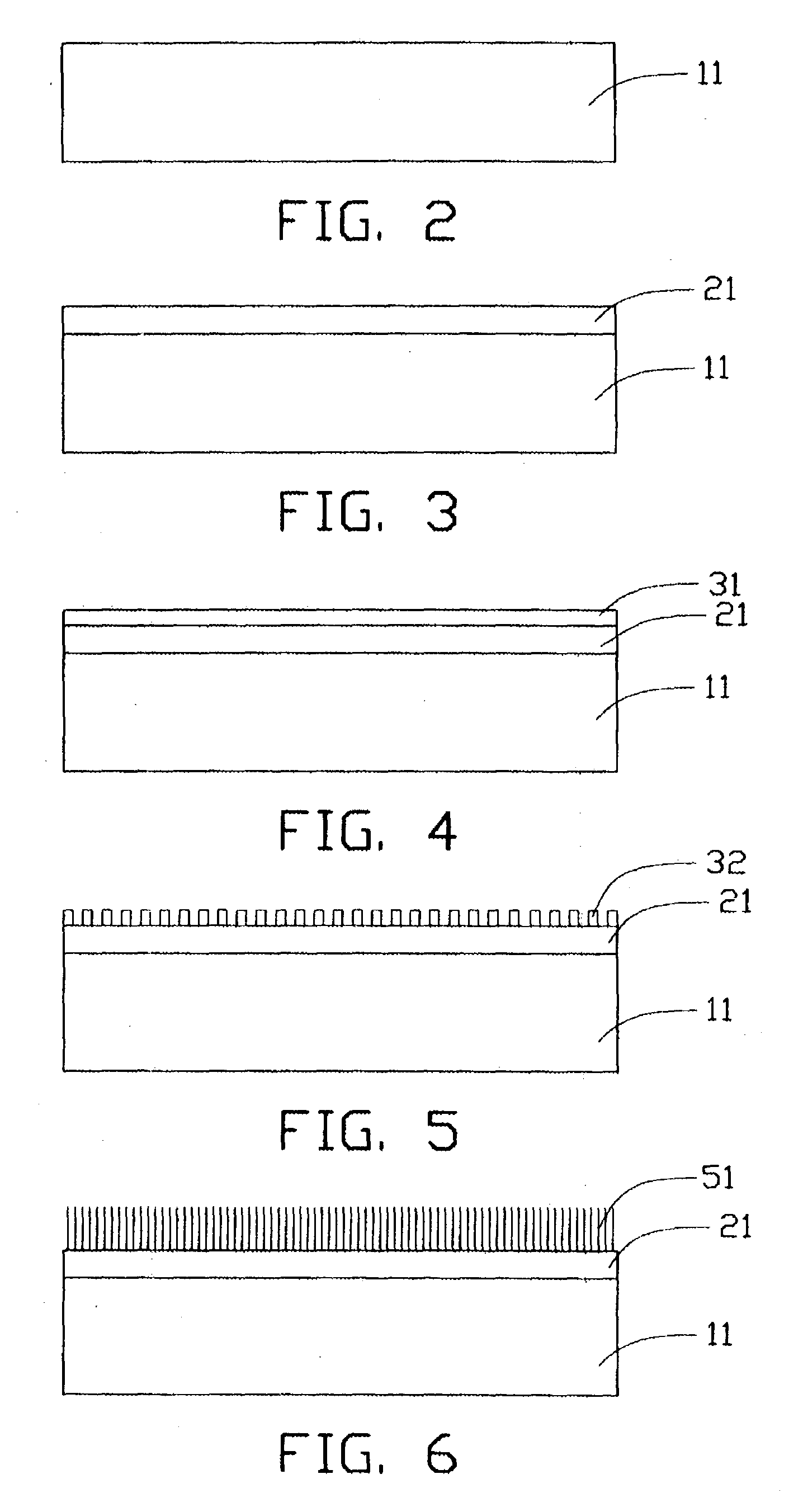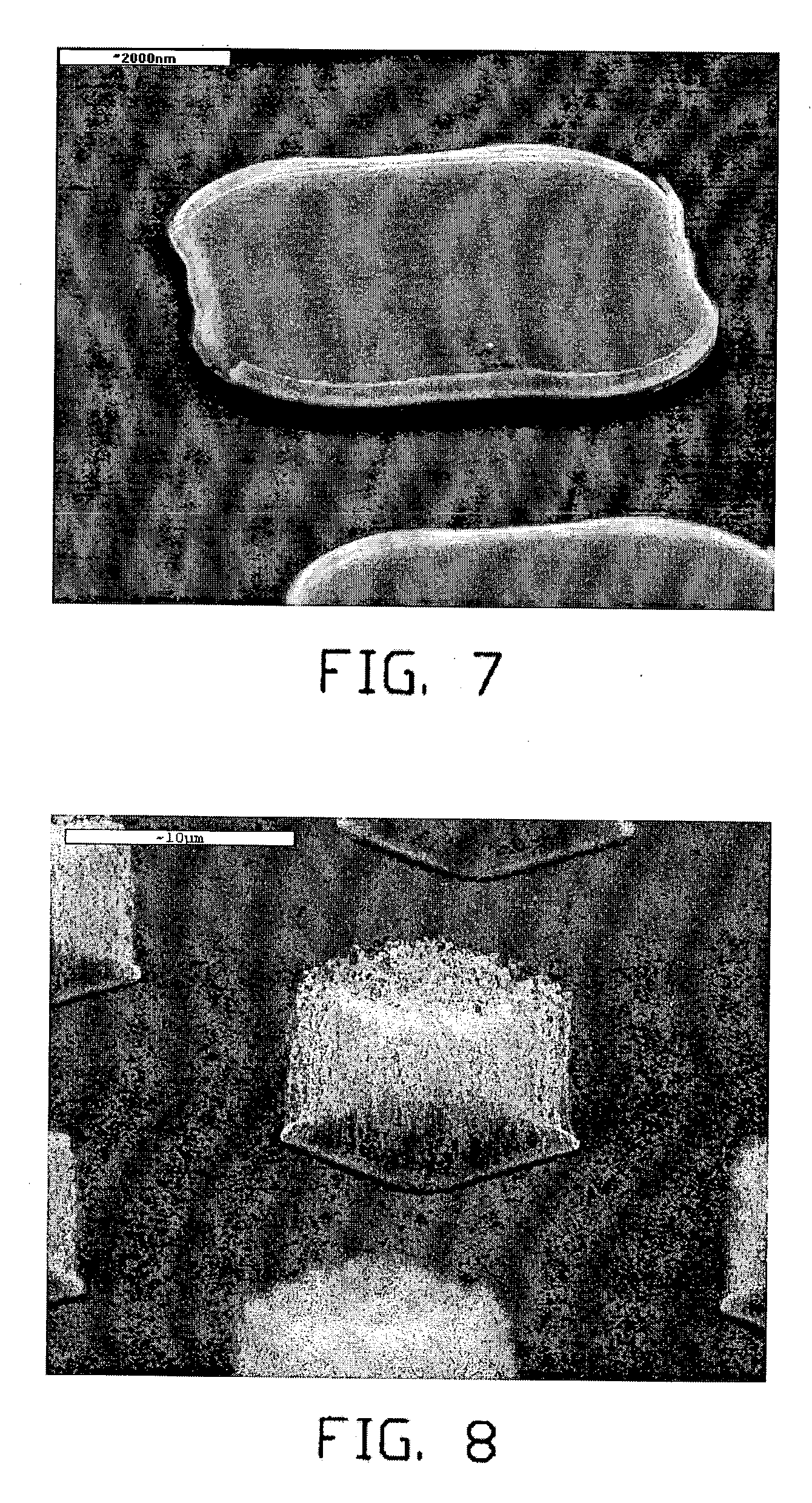Carbon nanotube array and method for forming same
- Summary
- Abstract
- Description
- Claims
- Application Information
AI Technical Summary
Benefits of technology
Problems solved by technology
Method used
Image
Examples
Embodiment Construction
[0024] A preferred method for forming a carbon nanotube array using a metal substrate according to the present invention will be described with reference to the flowchart of FIG. 1.
[0025] Referring also to FIGS. 2-6, a metal substrate 11 is first provided (step 10). The metal substrate 11 can be a metal plate or a metal electrode formed on a base. If a base is used, it can be glass, silicon, quartz or another suitable material having a smooth surface. The metal electrode can be formed on the base by plating or sputtering. The selected metal plate or metal electrode is polished to obtain a smooth surface thereon. The metal substrate 11 can be nickel (Ni), steel, tantalum (Ta), silver (Ag) or another suitable metallic material.
[0026] In principle, there is no particular limitation on selection of the metal plate material or the metal electrode material. Any metallic material used in the semiconductor industry can be used as the metal substrate 11. However, there are four criteria that...
PUM
| Property | Measurement | Unit |
|---|---|---|
| Time | aaaaa | aaaaa |
| Thickness | aaaaa | aaaaa |
| Angle | aaaaa | aaaaa |
Abstract
Description
Claims
Application Information
 Login to View More
Login to View More - R&D
- Intellectual Property
- Life Sciences
- Materials
- Tech Scout
- Unparalleled Data Quality
- Higher Quality Content
- 60% Fewer Hallucinations
Browse by: Latest US Patents, China's latest patents, Technical Efficacy Thesaurus, Application Domain, Technology Topic, Popular Technical Reports.
© 2025 PatSnap. All rights reserved.Legal|Privacy policy|Modern Slavery Act Transparency Statement|Sitemap|About US| Contact US: help@patsnap.com



